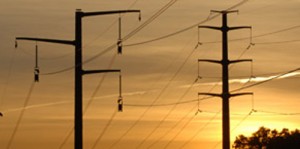 Permits, regulations, and public participation — these (and other factors) continue to present challenges for the electric utility industry. Staying up-to-date with the latest industry information is important, but it’s also increasingly critical to learn how to turn these challenges into opportunities and solutions. That’s why we’re excited to attend the 2013 EEI/NRECA Utility Siting Workshop in Richmond, Va. This four-day event, which kicks off on October 6, is recognized as the industry’s biggest siting workshop of the year and brings together the biggest players in utility siting to analyze and discuss the most important challenges facing the industry.
Permits, regulations, and public participation — these (and other factors) continue to present challenges for the electric utility industry. Staying up-to-date with the latest industry information is important, but it’s also increasingly critical to learn how to turn these challenges into opportunities and solutions. That’s why we’re excited to attend the 2013 EEI/NRECA Utility Siting Workshop in Richmond, Va. This four-day event, which kicks off on October 6, is recognized as the industry’s biggest siting workshop of the year and brings together the biggest players in utility siting to analyze and discuss the most important challenges facing the industry.
America relies on an aging and ever-changing electrical system for reliable power. Although investment in the transmission of electricity from power plants to our homes and businesses has increased in recent years, additional power plants, transmission line upgrades and new electric transmission lines will be needed to continue to meet demand, provide a reliable electric source, and to respond to recent closure of coal-fired power plants and the recent surge of natural gas in the U.S. economy.
A few of the most important and difficult components of building new power plants and electric transmission lines is the planning, siting, public involvement and permitting that takes place before they can be constructed and this utility siting workshop is the best I know of in the industry.
From Monday’s welcoming address by Scot Hathaway, vice president of transmission at Dominion Virginia Power, to the closing session on “New Technologies and New Strategies,” the workshop, sponsored by the Edison Electric Institute and the National Rural Electric Cooperative Association, is packed with case studies, techniques and best practices to help attendees develop and deliver successful utility siting solutions.
I’m also looking forward to Monday’s plenary on underground transmission. Roger Anderson, senior research scientist at the Center for Computational Learning Systems of the Fu Foundation School of Engineering and Applied Science, Columbia University, will join Theodore J. Kury, director of energy studies at the University of Florida’s Public Utility Research Center to tackle the question: Should utilities be required to bury power lines?
Here’s a look at some of the additional topics included in the workshop:
- Dealing with public anger: new approaches to an old problem
- New siting challenges — underground transmission
- Media and crisis communications
- Mapping tools for siting transmission
- Successful practices for permitting
- Creating efficiencies and the NEPA pre-application process
- Using regional transmission planning to improve transmission siting
- New technologies and strategies
With a continental breakfast to start each day, a networking lunch and an evening reception on the agenda, there are plenty of opportunities to discuss industry issues with your peers and build your network — always a vital part of any event.
If you haven’t yet secured your spot for the utility siting workshop, registration is still available. And if you’re headed to Richmond, be sure to say hi and introduce yourself. I’d love to meet you!
Mark Van Dyne is the marketing manager in Burns & McDonnell’s Environmental Studies & Permitting Group. He has extensive project experience managing a variety of electric transmission line routing studies and specializes in providing expert witness testimony to various state public utility commissions. If you have questions or would like more information, email Mark.
